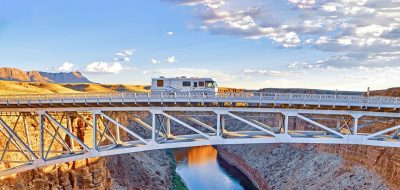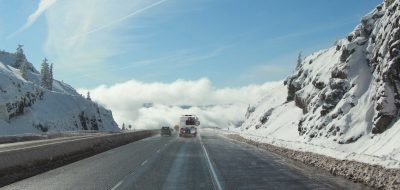Want to take advantage of your SUV or high-clearance two-wheel-drive vehicle? Then Cabeza Prieta National Wildlife Refuge is the place for you!
Boundless desert surrounds you in Cabeza Prieta, the third largest national wildlife refuge in the lower 48 states. Here, seven rugged mountain ranges cast shadows over barren valleys once swept by lava. Saguaros loom in stark profile above the baked earth. A 56-mile, shared border with Sonora, Mexico, might well be the loneliest international boundary on the continent.
Imagine the state of Rhode Island without any people and only one wagon track of a road. Cabeza Prieta National Wildlife Refuge is that big, that wild, and also incredibly hostile to those who need lots of water to live.
Cabeza Prieta, is Spanish for “dark head” and refers to a lava-topped granite peak in a remote mountain range in the western corner of the Refuge.
Temperatures may top 100 degrees F (37.7 C) for 90 to 100 consecutive days from June to early October. Summer thundershowers and winter soaking rains average about 3 inches on the western part of the Refuge and up to 9 inches on the eastside. The winter and summer pattern of rainfall in the Sonoran Desert stimulates the growth of more plant species than in most deserts.
Far from a barren desert, Cabeza Prieta harbors at least 391 plant species and more than 300 kinds of wildlife. Endangered Sonoran pronghorn and lesser long-nosed bats call this parched land home, as do desert bighorns, lizards, rattlesnakes, and desert tortoises.

Boundless desert surrounds you in Cabeza Prieta, the third largest national wildlife refuge in the lower 48 states. © Rex Vogel, all rights reserved
Prieta National Wildlife Refuge is designated by the American Bird Conservancy as a Globally Important Bird Area. Elf owls peer from holes carved in saguaros by Gila woodpeckers.
You’ll find creosote and bursage flats, mesquite, palo verde, ironwood, ocotillo and an abundance of cacti, including cholla, and saguaro on the bajadas (alluvial fans of sand, silt, and gravel deposited by running water on the slopes of mountain ranges).
The Refuge also takes the lead role in the recovery of the endangered Sonoran pronghorn. This endangered species ranges across the Sonoran desert in southwest Arizona and Sonora, Mexico in small, scattered bands.
Pick up a Permit First
Before entering the Refuge, you must obtain a valid Refuge Entry Permit and sign a Military Hold Harmless Agreement. Free permits are available from the Refuge office on Highway 85 on the northern edge of Ajo.
Most of the Refuge falls within the air space of the Barry M. Goldwater Air Force Range. Numerous low-flying aircraft cross the Refuge on their way to air-to-air bombing and gunnery ranges located to the north. Some military training exercises over the Refuge may require limitations on travel and even short periods of closure of the Refuge to the public. Military schedules are known in advance, so Refuge staff can help with your schedule.
You’ll Need 4-wheel Drive
Traveling on the Refuge requires a 4-wheel drive vehicle except for Charlie Bell Road where 2-wheel drive high-clearance vehicles may be driven. This 17-mile dirt road slices among ridges and ironwood-laced washes. At 8½ miles (13.6km), a historic windmill makes a good picnic spot.
Worth Pondering…
Wilderness settles peace on the soul
—E.O. Wilson, Biologist
If you enjoyed this article, you might also wish to read
Sonoran Pronghorns Make Comeback: Cabeza Prieta National
Where the Summer Spends the Winter: Ajo, AZ
If you enjoy these articles and want to read more on RV travels and lifestyle, visit my website: Vogel Talks RVing.









Alec Sevins
They'd better not force wind turbines into this priceless, untrammeled area. I hope it lacks sustained winds as temptation.